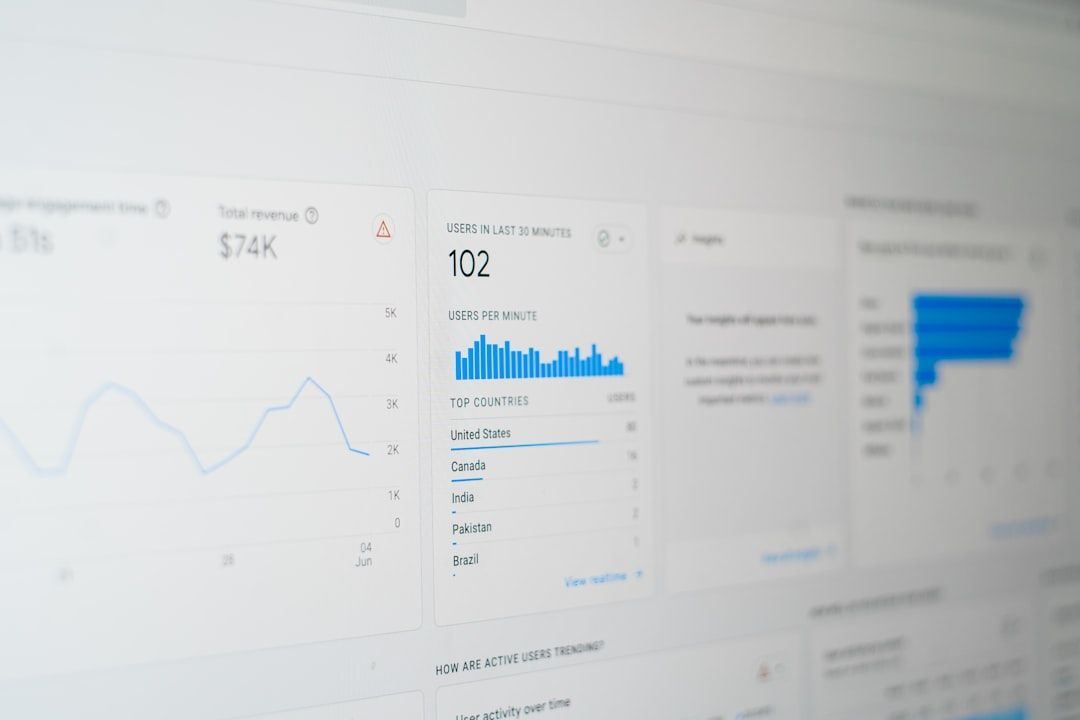Website Redesign 101: Transform Your Business Site from Meh to Marvelous
Why Your Business Website Might Be Costing You Customers
Website redesign for businesses is the process of completely overhauling your site's design, functionality, and user experience to better serve your customers and achieve your business goals. Here's what you need to know:
Key Elements of Business Website Redesign:
- Visual Overhaul- Updated design, colors, typography, and imagery
- UX Improvements- Better navigation, faster loading, mobile optimization
- Technical Updates- New CMS, security upgrades, SEO improvements
- Content Strategy- Fresh copy, improved messaging, clearer calls-to-action
- Performance Boost- Faster speeds, better Core Web Vitals scores
94% of users' first impressions are influenced by a company's website design and functionality. If your site looks outdated, potential customers are clicking away before reading your content.
75% of users judge a company's credibility based on website design alone. With over 60% of internet traffic coming from mobile devices, that clunky desktop-only site isn't helping.
Businesses that invest in thoughtful redesigns see real results. Companies report 80% increases in mobile conversion rates and 68% boosts in overall conversions after strategic website overhauls.
I'm Joseph Lopez nc, and I've helped businesses transform their online presence through strategic website redesigns that drive real results.
Why & When a Redesign Matters
The digital world moves fast, and what worked three years ago might be driving customers away today. Mobile-first design isn't optional anymore. Google uses your site's mobile version to determine search rankings, and over 60% of internet traffic comes from mobile devices.
Businesses that invest in thoughtful website redesign for businesses see incredible results. I've worked with companies that experienced dramatic changes - like a psychology practice that doubled their revenue within six months, or an industrial plating company that saw a 270% boost in organic traffic and 60% more quote requests.
The return on investment goes beyond making things look prettier. When people can easily steer your site, find what they need quickly, and complete purchases without frustration, conversion rates naturally improve. 61% of users won't return to a mobile site they had trouble using.
What Is a Website Redesign vs. a Refresh?
A website refresh is like giving your site a makeover - updating colors, images, copy, and minor UX elements. The bones stay the same.
A full website redesign is rebuilding the foundation, restructuring functionality, implementing new technology, and often moving to a different content management system.
A refresh works when your site functions properly but looks outdated, you need minor UX improvements, or you're working with budget constraints.
You need a full redesign when your site doesn't work on mobile devices, core features are broken, you're rebranding, performance issues hurt your business, or your current system limits growth.
Key Business Benefits of a Redesign
Better lead generation and conversions happen when your site removes obstacles between visitors and becoming customers. I've seen conversion rate improvements ranging from 37% to over 200%.
SEO performance gets a significant boost with modern best practices. Clean code, fast loading times, mobile optimization, and proper technical setup help search engines rank your site better.
Brand trust improves instantly when your site looks professional and works flawlessly. A polished online presence translates directly to higher conversion rates.
Revenue growth is the ultimate goal. Businesses regularly see their revenue double within six months of launching a strategically redesigned site.
Red Flags That Signal It's Time
Visual and technical problems like non-responsive mobile design, loading times over 3 seconds, outdated appearance, frequent broken links, and forms that don't work on phones are serious issues.
Performance indicators like bounce rates above 70%, declining search traffic, low conversion rates, negative feedback about usability, and high cart abandonment rates point to fundamental problems.
Business changes often outgrow existing websites. If you've rebranded, added new products not well-represented, fallen behind competitors online, or found security vulnerabilities, it's time for a change.
Planning Your Website Redesign for Businesses: Goals, Research & Roadmap

The planning phase makes or breaks your website redesign for businesses. The most successful redesigns start with 4-6 weeks of research and strategy work that separates home runs from strikeouts.
Stakeholder alignment is crucial. Get everyone at the table - sales, marketing, customer service, and leadership. Each team has insights about customer pain points and business priorities that should shape your redesign.
Start by diving into your Google Analytics data. Look at top-performing pages, highest traffic sources, and where people drop off in conversion funnels. Heatmaps show where people actually click, scroll, and get stuck.
Don't forget your content inventory. Catalog everything you have, note what's working, and identify what needs to go.
For more detailed guidance on developing content that converts during your redesign process, our blog covers everything from strategy to execution.
Setting SMART Objectives for Your Website Redesign for Businesses
Vague goals kill redesign projects. Real SMART objectives give your project direction and help measure success. Instead of "improve the site," try "increase organic search traffic by 25% within six months" or "boost lead generation by 40% in the first quarter."
Traffic targets should be specific and measurable. Maybe improve average session duration by 30%, or reduce bounce rate to below 50%.
Conversion goals are where the rubber meets the road. E-commerce businesses might want to increase conversion rates by 2%. Service businesses might aim for 35% better form completion rates or 20% more qualified sales inquiries.
Auditing Current Site & Competitors
Before improving anything, understand exactly what you're working with. Run your site through Google PageSpeed Insights and Google's Mobile-Friendly Test. These directly impact search rankings and user experience.
Your backlink profile tells you which content earns trust and authority online. Don't accidentally delete pages driving valuable traffic.
Site grader tools quickly identify technical issues like broken links, missing alt text, or security vulnerabilities.
Competitor analysis isn't about copying - it's understanding the landscape and finding opportunities to stand out.
Crafting a User-Centric Strategy
Buyer personas are your north star for design decisions. Create detailed profiles of ideal customers, including pain points, goals, and online behavior.
User flows map the journey people take from landing on your site to completing desired actions. Information architecture organizes content in ways that make sense to users, not just internal team structure.
Wireframes test functionality before getting distracted by colors and fonts. Prototyping creates clickable versions you can test with real users.
The goal is creating a site that feels intuitive to users. When users easily find what they need and complete goals, conversions naturally follow.
2024/2025 Design, UX & Technical Must-Haves
Core Web Vitals aren't just technical jargon - they're your lifeline to Google visibility. Page loading speed, interaction responsiveness, and visual stability directly impact search results and whether visitors stick around.
The minimalism movement has evolved beyond clean design. It's about purposeful design where every element helps users complete goals.
Micro-interactions add responsiveness that makes your site feel alive. Subtle animations when hovering over buttons or gentle bounces when forms submit build trust without overwhelming visitors.
Research shows that mobile devices drive approximately half of all website traffic , making mobile-first design essential for any website redesign for businesses.
Dark mode reduces eye strain during evening browsing. Accessibility compliance with WCAG 2.2 ensures your site works for everyone while typically improving search rankings.
Mobile-First & Accessibility Essentials
Mobile design isn't about shrinking your desktop site. The best mobile experiences feel native to mobile devices, with every interaction optimized for thumbs and touch.
Responsive layouts need to be fluid and flexible, adapting to any screen size. Keyboard navigation is essential for accessibility and improves experience for power users.
Alt text for images helps visually impaired users while giving search engines context. ARIA labels make complex interface elements understandable to screen readers.
Google's Mobile-Friendly Test should be your regular checkpoint, but test on real devices with real users too.
Visual Storytelling & Engagement
Modern websites tell stories that connect emotionally with visitors. Hero videos can be powerful when kept short (under 15 seconds) with fast loading and backup images.
Custom illustrations help you stand out from competitors using generic stock photos while explaining complex ideas quickly.
Interactive statistics transform boring numbers into engaging experiences. Instead of static "95% customer satisfaction," use animated progress bars that fill as visitors scroll.
Tech Stack Choices & Integrations
WordPress remains popular for flexibility and extensive plugin ecosystem. Headless CMS solutions offer better performance but require more technical expertise.
E-commerce integration must handle inventory, payments, shipping, and taxes seamlessly. CRM integration and marketing automation turn your website into a growth engine.
Performance caching and content delivery networks should be built in from day one. Choose based on what serves your business goals effectively for years to come.
Safeguarding SEO & Conversions During and After the Redesign
You're probably worried about losing search rankings during a website redesign for businesses. With the right approach, your redesign can actually boost SEO performance. The secret is making changes strategically while protecting what's already working.
I've guided dozens of businesses through redesigns without losing search visibility. Most see improvements within 3-6 months post-launch. The difference between success and disaster comes down to treating SEO as a core part of your redesign process.
For additional insights on creating content that drives traffic during and after your redesign, explore our guide on writing great posts that increase site traffic.
Pre-Launch SEO Audit & Redirect Map
Before touching a single page, understand exactly what you're working with. Pull a complete list of current URLs and note which ones actually get traffic. Use crawl report data to identify pages that really drive results.
Backlink preservation is critical. Those links represent years of relationship building. Map out which pages have the strongest backlink profiles - keep these URLs unchanged if possible, or redirect very carefully.
Document current title tags and meta descriptions for high-performing pages. If they're working well, reuse or improve them rather than starting from scratch.
Every old URL needs a clear path to its new home through 301 redirects. Miss this step, and you'll watch hard-earned rankings disappear into 404 errors.
Launch Checklist & Core Web Vitals Monitoring

Launch day doesn't have to be stressful with systematic testing. Staging tests should cover every user interaction. Click every button, fill out every form, test every page on multiple devices.
Core Web Vitals are make-or-break metrics. Keep Largest Contentful Paint under 2.5 seconds, First Input Delay under 100 milliseconds, and Cumulative Layout Shift under 0.1.
Set up uptime monitoring alerts so you know immediately if something goes wrong. Verify SSL certificates, confirm analytics tracking, and double-check XML sitemaps.
Post-Launch KPIs & CRO Experiments
Your redesign is the starting line, not the finish line. The most successful businesses treat their new site as a foundation for continuous improvement.
Track organic search traffic trends, but dig deeper into conversion rate changes by traffic source. Heatmaps and session replays reveal user experience truths that analytics alone can't show.
A/B testing becomes more powerful with a clean, well-structured site. Test different headlines, button colors, form lengths, and layouts systematically. Change one element at a time to clearly identify what drives results.
The businesses that see the biggest long-term returns establish systematic optimization processes. Set up monthly performance reviews, prioritize improvements based on business impact, and always test changes before implementing site-wide.
Costs, Timelines & Choosing the Right Partner
Website redesigns are investments, not expenses. The businesses that treat them as such see dramatically better results. The biggest mistake? Choosing based on price alone. That $5,000 redesign might seem like a steal until it costs you thousands in lost customers monthly.
Typical Budget Ranges & Hidden Costs
Small businesses typically invest $15,000 to $30,000 for professional redesigns. This covers 5-15 pages with essential functionality, mobile optimization, and basic SEO setup.
Mid-market companies usually spend $20,000 to $40,000 for more sophisticated solutions. This includes 15-50 pages, custom design, e-commerce capabilities, advanced SEO, and third-party integrations.
Enterprise-level redesigns start around $80,000 and can exceed $150,000. These involve complex architectures, advanced functionality, enterprise security, and extensive integrations.
Content creation often adds 20-30% to your total budget. Professional copywriting, photography, and graphics aren't usually included in base quotes.
Third-party software licenses add up quickly. CRM integrations might require premium API access. E-commerce needs payment processing fees. Advanced analytics tools have monthly costs.
| Redesign Approach | Typical Cost Range | Timeline | Best For |
|---|---|---|---|
| DIY Platform | $500 - $3,000 | 1-3 months | Very small businesses, tight budgets |
| Freelancer | $5,000 - $25,000 | 2-6 months | Small businesses, simple requirements |
| Agency | $15,000 - $150,000+ | 3-9 months | Businesses needing comprehensive solutions |
3-9 Month Timeline Breakdown
Good redesigns take time. Findy and planning consume the first 4-6 weeks. Design takes 6-10 weeks including wireframing, visual concepts, and mobile adaptation. Development requires 8-16 weeks for coding, CMS setup, integrations, and content migration. Testing and launch need 2-4 weeks minimum for quality assurance and performance optimization.
Add 20-30% buffer time to any timeline estimate. Client feedback cycles, technical challenges, and content creation always take longer than expected.
Evaluating Agencies & RFP Tips
Portfolio quality tells you everything. Look for relevant industry experience and technical complexity matching your needs. Don't stop at pretty pictures - dig into measurable results they achieved.
Communication style during proposals predicts the entire project experience. Are they responsive? Do they ask thoughtful questions about business goals? Can they explain technical concepts clearly?
When creating RFPs, provide detailed requirements and realistic budget ranges. Ask for specific examples of similar projects and detailed timeline breakdowns.
Always check recent client references. Talk to actual clients about communication, timeline adherence, problem-solving, and post-launch support.
Watch for red flags like unrealistic timeline promises, guaranteed results, or significantly lower bids without clear explanations. Choose based on fit, capability, and shared vision - not just price.
Conclusion & Next Steps
Your website is one of your most powerful tools for growth. When done right, a website redesign for businesses transforms how customers perceive your company, how easily they can work with you, and ultimately, how much revenue you generate.
The businesses we've worked with see real, measurable changes. More qualified leads, higher conversion rates, increased revenue that makes the redesign investment look like pocket change.
Success doesn't happen by accident. Companies that see dramatic results approach redesign systematically. They start with clear business goals, research users deeply, and implement modern best practices that improve performance.
Most importantly, they understand that launching a new site is just the beginning. The best results come from treating your website as a living asset needing ongoing optimization.
The reality is simple: every day you wait is another day of lost opportunities. While you're debating timing, competitors are capturing customers with better websites. The "perfect" time rarely comes, but the right time is usually now.
At Number 2 Club, we've guided businesses through this entire journey. Whether you're a growing company that's outgrown your current site or an established business ready to modernize your digital presence, we understand the unique challenges you face.
Start by auditing your current site using the red flags we outlined. Define what success looks like using specific, measurable goals. Research your options for partners who understand your industry and objectives.
Most importantly, plan realistically for both timeline and budget. Rushing leads to compromises, while perfectionism leads to paralysis. The sweet spot is thoughtful planning with decisive action.
Ready to stop letting your website hold your business back? We're here to help you steer every step of the redesign process, from initial strategy through post-launch optimization. Contact us today to discuss how a strategic website redesign can accelerate your growth and turn your digital presence into a competitive advantage.
Your future customers are already looking for businesses like yours online. Make sure they find a website that convinces them you're exactly who they need.












